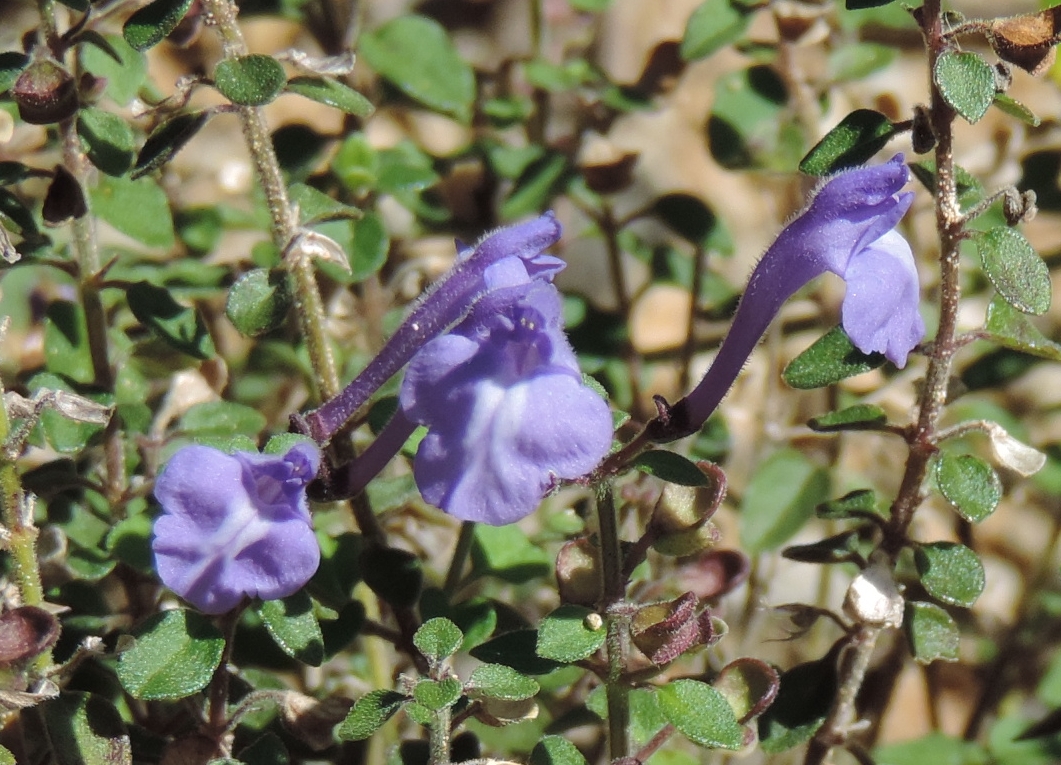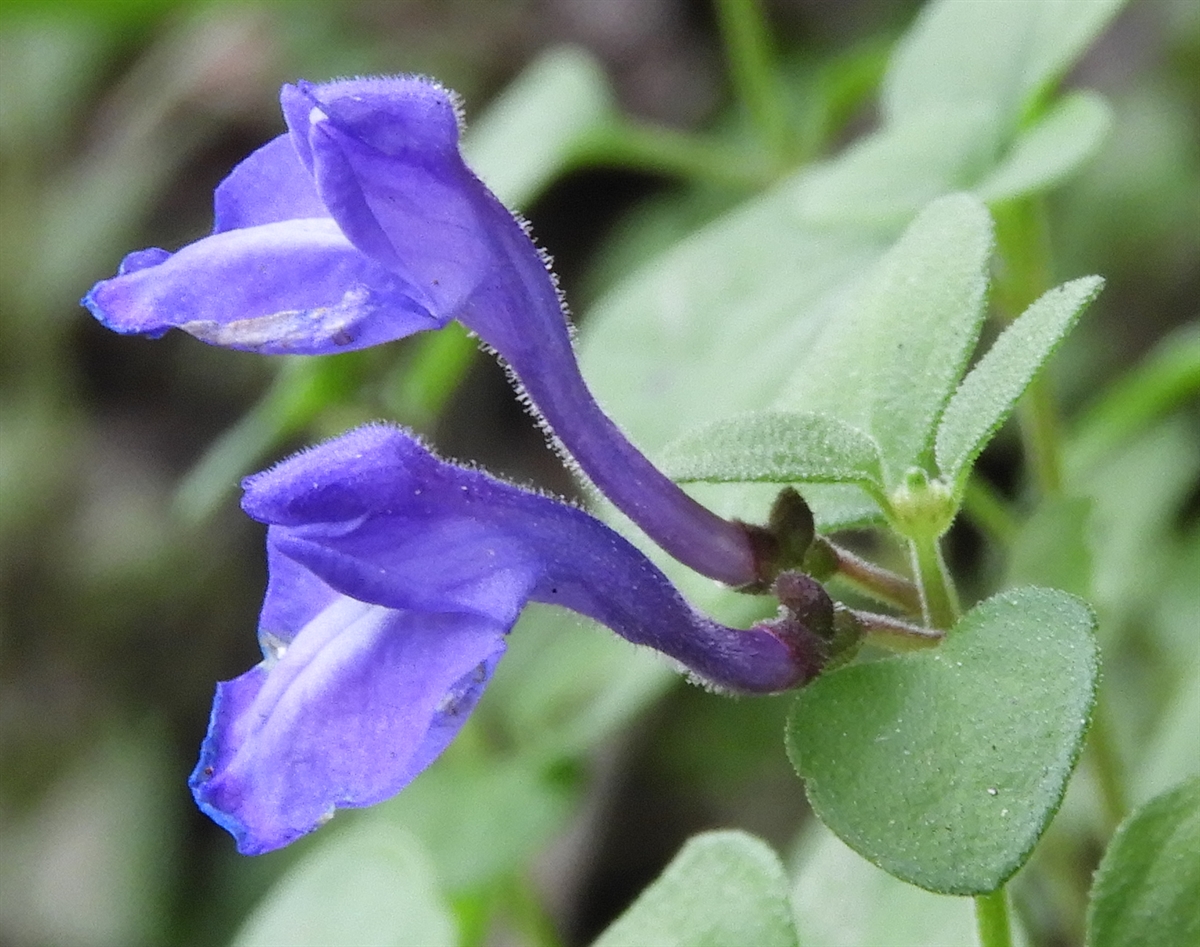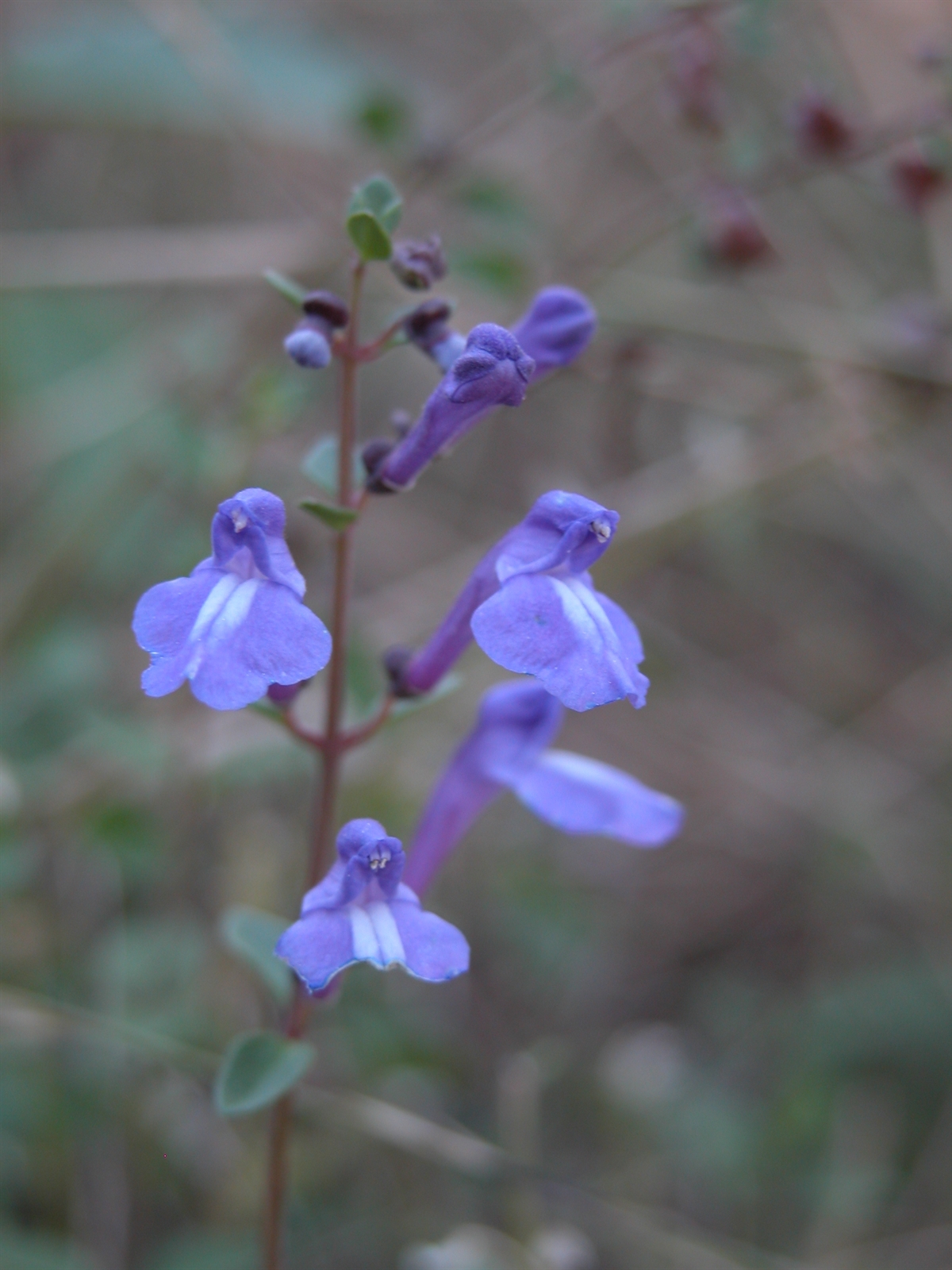Habit: Scutellaria havanensis grows as a perennial up to 50 cm in height. The leaves are arranged oppositely to 2 cm in length, ovate with a few teeth or entire leaf margin and obtuse leaf apex. All vegetative material is lightly pubescent.
The complete, perfect, zygomorphic flowers are solitary in leaf axils and subtended by a bract. The calyx has 5 fused, greenish sepals forming a tube that is covered with hairs. On the upper side of the calyx is a small protuberance. The corolla has 5 fused purple petals with 3 lobes below and 2 lobes above. The lower two lobes have 2 white lines. There are 4 stamens fused to the throat of the corolla. The ovary is superior with 4 locules each with a single ovule. The fruit is a nutlet.
Habitat: Scutellaria havanensis grows along the edges of Dry Broadleaf Evergreen Formations- Forests/Shrublands (coppice) and in Pine Woodlands.
Distribution: Scutellaria havanensis occurs in the northern island groupings in the Lucayan Archipelago, the Greater Antilles, and Florida.
Medicinal/Cultural/Economic usage: Scutellaria havanensis is not known to be used medicinally in the Lucayan Archipelago.


